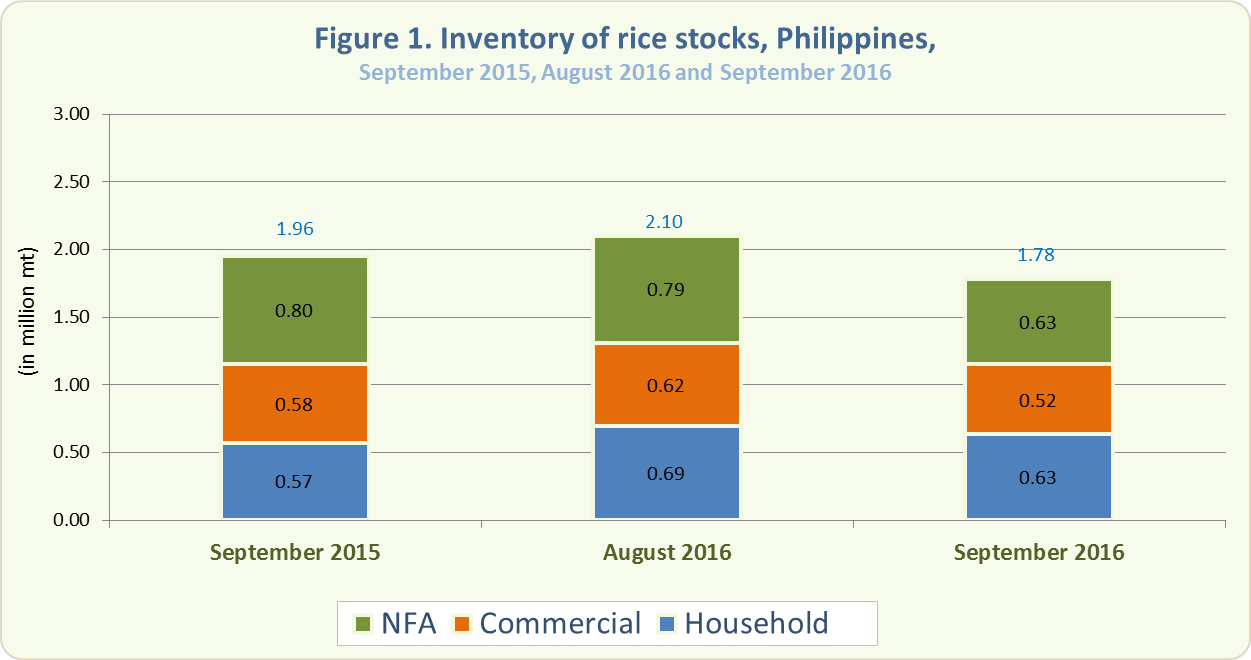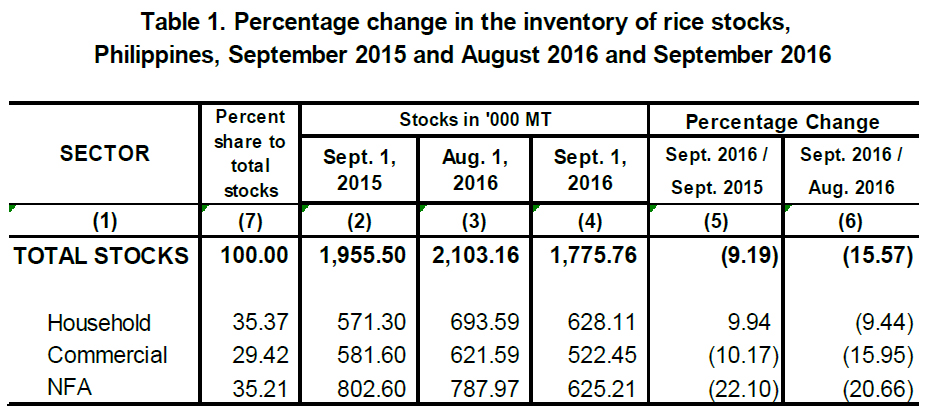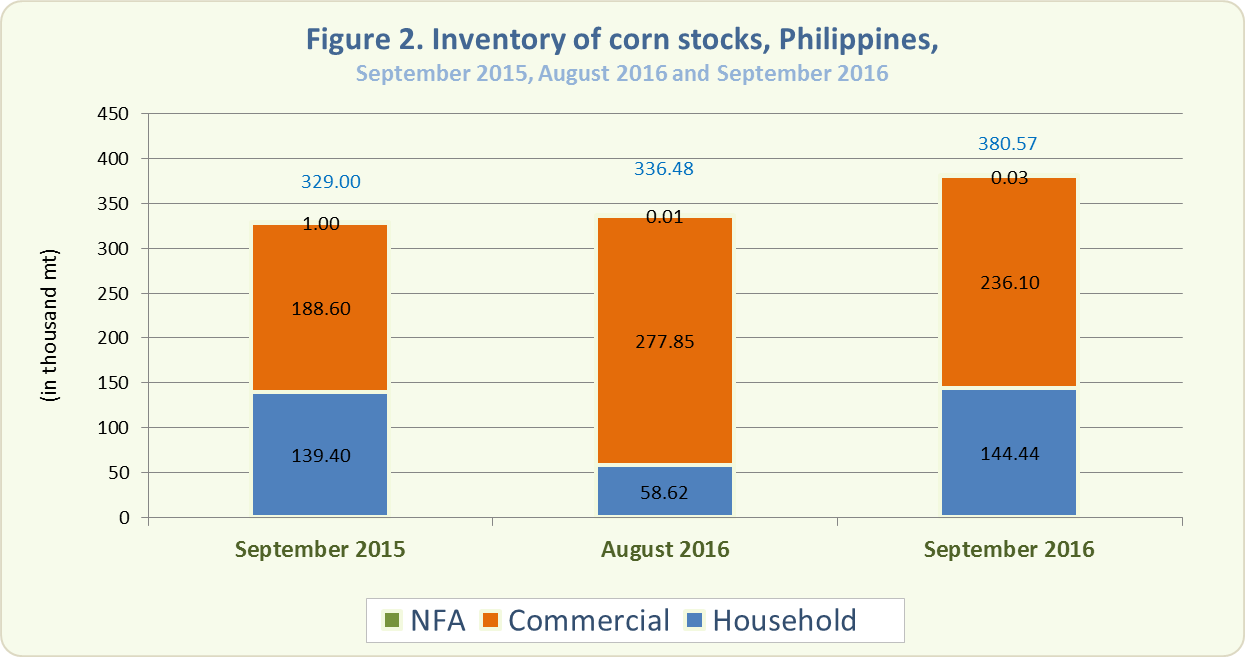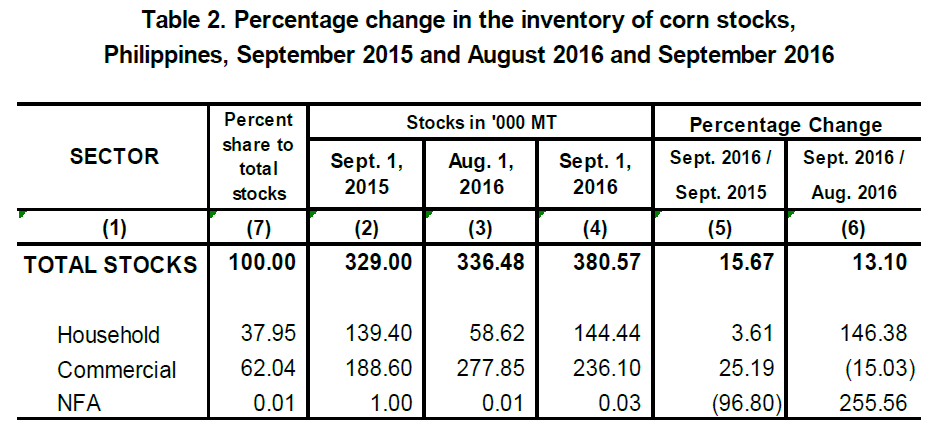Release Date :
RICE
- The total rice stock inventory as of September 1, 2016 was 1.78 million metric tons (Figure 1). This was 9.19 percent lower than the 1.96 million metric tons level in September 2015 and 15.57 percent lower than last month’s inventory level of 2.10 million metric tons (Table 1).
- Year-on-year, rice stocks in the households increased by 9.94 percent. However, stocks in commercial warehouses and in NFA depositories decreased by 10.17 percent and 22.10 percent, respectively (Table 1).
- Compared with their levels last month, rice stocks in all sectors dropped. Stocks in the households dropped by 9.44 percent, in commercial warehouses by 15.95 percent, and in NFA depositories by 20.66 percent (Table 1).
- Of this month’s total rice stock inventory, 35.37 percent were with the households, 29.42 percent in commercial warehouses, and 35.21 percent were in NFA depositories. The latter comprised 79.76 percent of imported rice.
- The total rice inventory for this month would be adequate for 51 days. Stocks in the households would be good for 18 days, those in commercial warehouses for 15 days, and those in NFA depositories for 18 days.


CORN
- As of September 1, 2016, the total corn stock inventory was 380.57 thousand metric tons (Figure 2). This was 15.67 percent higher than last year’s record of 329.00 thousand metric tons and 13.10 percent higher than last month’s level of 336.48 thousand metric tons (Table 2).
- Compared with last year, corn stocks in the households and in commercial warehouses increased by 3.61 percent and 25.19 percent, respectively. On the other hand, stocks in NFA depositories decreased by 96.80 percent (Table 2).
- Compared with last month, corn stocks in the households and in NFA depositories grew by 146.38 percent and 255.56 percent, respectively. However, stocks in commercial warehouses dropped by 15.03 percent (Table 2).
- Around 62.04 percent of this month’s total corn stock inventory were in commercial warehouses, 37.95 percent were with the households, and 0.01 percent in NFA depositories.


Technical Notes
Monthly rice and corn stocks inventory are generated from three sectors, namely: household, commercial, and National Food Authority (NFA). The household stocks are taken from the Palay and Corn Stocks Survey (PCSS1) of the PSA, which covers farming and non-farming households nationwide. The commercial stocks are sourced from registered grains businessmen through the Commercial Stocks Survey (CSS), conducted by the NFA, the results of which are submitted to PSA. NFA stocks are monitored from their warehouses/depositories.
